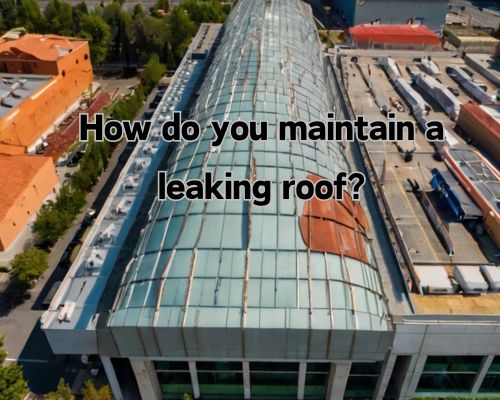
Expert Tips for Long-Term Solutions
Maintaining a leaking roof is essential for any homeowner to prevent further damage to the home.
Identifying the source of the leak is the first step. Inspect both the interior and exterior of your roof, including the attic, to locate any damaged areas.

“Regular maintenance is crucial in keeping your roof in good condition. This includes replacing damaged shingles and applying sealant to vulnerable spots.” said Charles Jimerson from CJ Commercial Roofing NJ.
Addressing leaks promptly can save you from costly repairs later.
When repairing your roof, always ensure safety by using proper equipment and taking necessary precautions.
For instance, you can use a garden hose to identify difficult-to-find leaks. Then, address them effectively by resealing or replacing damaged materials.
Assessing and Identifying Roof Leaks
Understanding how to effectively assess and identify roof leaks is essential to maintaining the integrity of your home.
This involves conducting a safe initial inspection, pinpointing the source of the leak, and evaluating the extent of water damage.
Initial Inspection and Safety Precautions
Before you begin, prioritize safety. Wear soft-soled boots to prevent damaging the roof and consider a fall restraint system for added security.
Start by inspecting the attic with a flashlight. Look for water stains, streaks, or damp spots on the underside of the roof deck.
This can give you a general idea of where the leak might be. Always avoid stepping directly on the rafters to prevent accidents and damage.
Locating the Source of a Leak
Once the initial inspection is done, it’s crucial to accurately locate the source of the leak.
Begin by following the trail of water stains or damp spots from inside the attic uphill to the origin point on the roof.
Most leaks are due to damaged shingles, broken or corroded flashings, or issues around vent boots.
If you see moss or algae growth, it could indicate areas where water is trapped and causing leaks. Listen for dripping sounds and look for wet spots to zero in on the affected area.
Evaluating the Extent of Water Damage
After locating the leak, assess the extent of water damage.
Check the condition of the rafters and the roof deck. Water stains and mold on these components suggest significant infiltration.
Inspect the ceiling and walls below the leak for discoloration or cracks, which can indicate severe damage that compromises the integrity of your home.
Consistent inspection and addressing leaks promptly can prevent further issues and costly repairs.
Repair Strategies for a Leaky Roof
When dealing with a leaky roof, it’s important to choose the right repair strategy to prevent further damage. This section covers both temporary fixes and long-term repair solutions to address the issue effectively.
Temporary Fixes and Mitigation
Initially, you might need temporary measures to stop a leak before a professional roofer can implement a permanent solution.
Start by locating the source of the leak. Use a garden hose to identify problem areas if necessary.
Place a tarp over the leaky section to prevent further water intrusion. Secure it tightly with nails or bricks to ensure it doesn’t blow away.
Inside the house, use buckets to catch dripping water and move valuables out of the way. Ensure good ventilation to dry out affected areas.
Long-term Repair Solutions
For lasting repairs, consider replacing damaged or missing shingles. Carefully remove damaged shingles by prying up the nails and tar strips. Then, install new shingles with fresh sealant.
Check for and repair damaged flashing, which is common near chimneys and vents. Caulking and sealing around these areas can prevent future leaks. Always use high-quality materials to ensure durability.
In more severe cases, consult a professional roofer or contractor like Charles Jimerson from CJ Commercial Roofing NJ. They can assess the structural integrity of your roof. Then, they can suggest either extensive repairs or a complete replacement if necessary. Keep copies of any warranties to understand your coverage for future issues.





